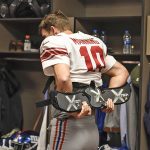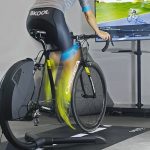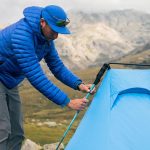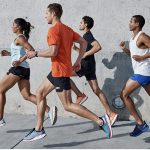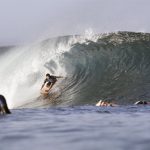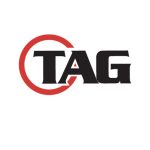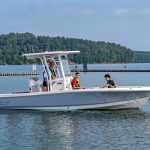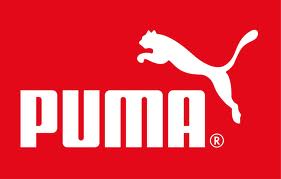 Hampered by a slow-down in Europe, Puma reported earnings slid 4.9 percent in the first quarter as gross margins slid 120 basis points. Sales rose 6.1 percent. On a currency-adjusted basis, sales were down 1.4 percent in the EMEA region while growing 8.5 percent in the Americas and 10.2 percent in the Asia/Pacific region. Management reiterated its full-year sales and earnings targets.
Hampered by a slow-down in Europe, Puma reported earnings slid 4.9 percent in the first quarter as gross margins slid 120 basis points. Sales rose 6.1 percent. On a currency-adjusted basis, sales were down 1.4 percent in the EMEA region while growing 8.5 percent in the Americas and 10.2 percent in the Asia/Pacific region. Management reiterated its full-year sales and earnings targets.
“After a strong finish in 2011, Puma's first-quarter sales growth could not keep pace with that of recent quarters, translating into weaker bottom line results,” said Franz Koch, CEO of PUMA SE, in a statement. “Our first quarter sales performance indicates that we are facing challenges in Europe. As a consequence, we have begun to respond to these challenges, optimizing the efficiency of our business model in the EMEA region. In addition, I am confident that the product innovations we have in the pipelines will contribute to achieving our full-year sales and earnings targets against the background of this extraordinary sports year.”
Highlights First Quarter 2012
- Consolidated sales increase by 6.1% to € 820.9 million.
- Gross profit margin falls by 120 basis points to 51.2%.
- EBIT decline by 8.1% to € 102 million.
- Net earnings decrease slightly, by 4.9% to € 74 million.
- EPS decline from € 5.17 to € 4.92.
- Long-term contractual partnership with the Italian Football Federation extended.
Outlook for the Financial Year 2012
- Management reiterates full-year sales target of high single-digit growth for 2012.
- Management continues to see net earnings increasing in the mid-single digit range for 2012.
Sales Performance By Region
With consumer spending remaining sluggish within the Eurozone, Sportlifestyle company Puma's first-quarter sales increased by 6.1 percent in Euro terms and 4.2 percent currency adjusted to €820.9 million compared to last year.
Sales in the EMEA region softened by 1.4 percent currency adjusted to €368 million, as restrained consumer spending in the wake of the financial crisis in the Eurozone continued to impact demand. In addition to the challenging overall business climate, the late arrival of winter in Europe dampened sales at wholesale accounts and retailers, which slowed the in-take of spring collections and therefore had an effect on Puma's first-quarter sales.
As a consequence, Puma has begun to respond to these challenges, optimizing the efficiency of its business model in the EMEA region. To this end Sergio Bucher, formerly Puma's Head of Global Retail, was appointed the new General Manager for Europe. In line with the transformation outlined in the “Back on the Attack” growth strategy, the company is currently in the process of streamlining the country organizations and centralizing some of the back-office functions on a regional level.
A strong sales performance in Asia/Pacific and the Americas
counterbalanced the softening sales in the EMEA region. Fueled by growth in India, Korea and Japan, which all saw significant demand for Puma's Motorsport, Running and Lifestyle products, Asian sales climbed 10.2 percent currency adjusted to €192.1 million.
Sales in the Americas improved by 8.5 percent currency adjusted to €260.8 million. Within the Latin American region, Mexico, Argentina and Brazil in particular posted strong, double-digit growth rates. North America was up, supported by the new joint ventures Wheat Accessories and Janed socks and bodywear.
Sales Performance By Segment
Footwear sales declined 2.1 percent currency adjusted to €414.6 million in the first quarter. However, Puma has seen promising results of some of its major recent footwear product launches.
For example, the ARCHIVE LITE, an ultralight shoe with a contemporary look, is generating a double-digit sell-through in key leading doors in various countries in Europe and Asia. These styles have a distinct unique selling point, are bold, young and colorful and are the proof that Puma is heading in the right direction. Puma has extended its Lightweight Concept, incorporating further styles for the fourth quarter to fully capitalize on this opportunity.
The relevance of the Lightweight concept also applies to Puma's Performance categories. In 2012, Puma's Year of Speed, the company will be launching a new performance collection at the end of May that for the first time encompasses all of Puma's sport categories. Inspired by Usain Bolt, the collection answers every athlete's need for speed by taking performance technology and innovations, and incorporating them in footwear and apparel developed for various sports.
Sales in the Apparel segment climbed 8 percent currency adjusted to €267.6 million. The Lifestyle and Performance collections resonated well with consumers in all markets. Running, Lifestyle and Golf apparel products in particular were in demand. Puma further expects an increase in Apparel sales on the back of UEFA Euro 2012.
Accessories jumped 19 percent currency adjusted to €138.7 million, where Cobra Puma Golf continues to deliver an outstanding performance, while the new joint venture for socks and bodywear in the North American market follows suit.
Puma's Teamsport category was further strengthened in the first quarter by the signing of a long-term sponsorship contract with the Slovak Football Association, and the confirmation of a new long-term contractual partnership with the Italian Football Federation that sees Puma now actively managing the entire licensing portfolio of the Federation's assets on a global basis.
Puma also expanded its international club portfolio by signing the Brazilian Club Botafogo from Rio de Janeiro and the Italian Serie A club US Palermo. In addition, Puma extended its partnership with French football club Girondins de Bordeaux. The Teamsport business is expected to benefit not only from these new acquisitions, but also from the UEFA Euro 2012 in Poland/ Ukraine in June.
Puma Running was driven by the light-weight Puma Faas range, which includes the ongoing best-seller Puma Faas 300. The Running category will receive a further support in the second quarter with the unveiling of Olympic performance and lifestyle collections of the Jamaican athletics team designed by Cedella Marley, daughter of Reggae legend Bob Marley, at the beginning of June.
Motorsport remained active during the first quarter. Puma boosted its Formula 1 portfolio by signing new contracts with Mercedes GP Petronas. Nico Rosberg then provided the perfect start to this partnership, scoring his maiden F1 victory in his Mercedes AMG Petronas car at the Chinese Grand Prix in Shanghai two weeks ago.
Sales in Sailing also continued to increase as the marketing activities
around the Volvo Ocean Race and the press coverage of Puma's most recent success in this ocean marathon have been positive. In the current America's Cup World Series Puma, who serves as the exclusive licensee for the America's Cup Event Authority and the Puma-sponsored Team ORACLE Racing, are getting prepared for the next exciting regattas in Venice in May and Newport, Rhode Island in June.
Expenses and Profitability
Gross Profit Margin softens to 51.2 percent in the first quarter of 2012
Input price pressures were mainly responsible for the drop of the gross profit margin in the first quarter, which comprised 51.2 percent of group sales, down from 52.4 percent at the same point last year. Hedging also had a negative effect, as did the product and regional mix.
As a consequence, Footwear fell back from 51.3 percent to 49.5 percent, Apparel dropped slightly from 53.7 percent to 53.5 percent and Accessories declined from 54.0 percent to 51.9 percent which is mainly due to the first time inclusion of the newly added US sock and bodywear business, which carries lower margins.
Satisfying retail performance
Retail sales constituted €122 million, or 14.9 percent of total sales, in the first three months of 2012, an improvement of 15.2 percent year on year, underlined by positive comparable sales in the current store portfolio and newly opened stores in 2012.
Operating Expenses rise as growth strategy is implemented
Operating expenses rose by 8.0 percent to €322 million in the first quarter of 2012, as the “Back on the Attack” growth strategy continues to be implemented. This represents 39.3 percent of group sales compared to 38.6 percent in 2011. This increase was mostly due to rising marketing, research, design and development expenditures. Another component of the increase is the expansion of the retail store portfolio over the past twelve months.
Operating Result (EBIT) impacted by drop in gross profit margin
Operating profit declined in the first three months of 2012 from €111.0 million to €102.0 million, caused mainly by the drop in gross profit margin. The moderate increase in operating expenses was in line with Puma's plans. As a consequence, the EBIT ratio decreased from 14.4 percent last year to 12.4 percent this year.
Financial Result / Income from associated companies improves
The financial result improved from €-0.2 million to €1.1 million in the first quarter due to positive currency developments.
Earnings before Taxes (EBT) lower
Puma's first-quarter EBT was lower at €103.1 million in 2012 compared to €110.8 million in 2011, representing 12.6 percent of group sales compared to 14.3 percent at this time last year. Tax expenses also fell from €33.1 million to €27.9 million, representing a tax rate of 27.1 percent versus 29.9 percent for the comparable period in 2011.
Net Earnings drop slightly
Consolidated net earnings dropped slightly by 4.9 percent from €77.7 million to €73.9 million. Earnings per share therefore also fell back from €5.17 in 2011 to €4.92 in the first quarter of 2012.
Net Assets and Financial Position
Equity rises
Total assets as of March 31st rose by 7.9 percent from €2,303 million to €2,486 million due to increases in both inventories and trade receivables. The equity ratio moved up from 60.6 percent to 66.4 percent when compared to the first quarter of 2011, once again strengthening the capital base. Shareholder's equity is now equivalent to €1,652 million, up from €1,396 million.
Working Capital increases
Puma's overall Working Capital increased by 21.0 percent to €723.7 million. Looking at assets, inventories rose by 26.4 percent to €587.1 million. This is mainly due to anticipated sales growth in the upcoming quarters, continuous expansion of our retail store network and higher average prices per unit. Trade receivables also increased by 7.4 percent to €620.5 million, broadly in line with sales growth.
Cashflow (before acquisitions) remains constant
The Free Cashflow (before acquisitions) remained constant at €-111.5 million. Outflows consisted mostly of working capital increases. The payments for acquisitions relate to the purchase of the outstanding
Dobotex shares, effected on the 1st of January 2012.
Capex continued to increase by 28.1 percent to €-13.8 million and went mainly into Retail stores, supply chain initiatives and IT projects as “Back on the Attack” investments continued.
Cash Position reduced
The Total cash position was reduced by 18.3 percent from €300.8 million to €245.8 million, caused by the purchase of the remaining Dobotex shares. Including stable bank debts, the net cash position finished at €203.2 million.
Outlook for the Financial Year 2012
Puma's management has taken actions to improve the company's cost structure and strengthen product desirability to foster sales growth and profitability. Puma is confident of achieving the full year targets as outlined in the 2011 annual report. Management continues to foresee sales increases in the high single-digit range and an increase in net earnings in the mid-single digit range for the full year.

